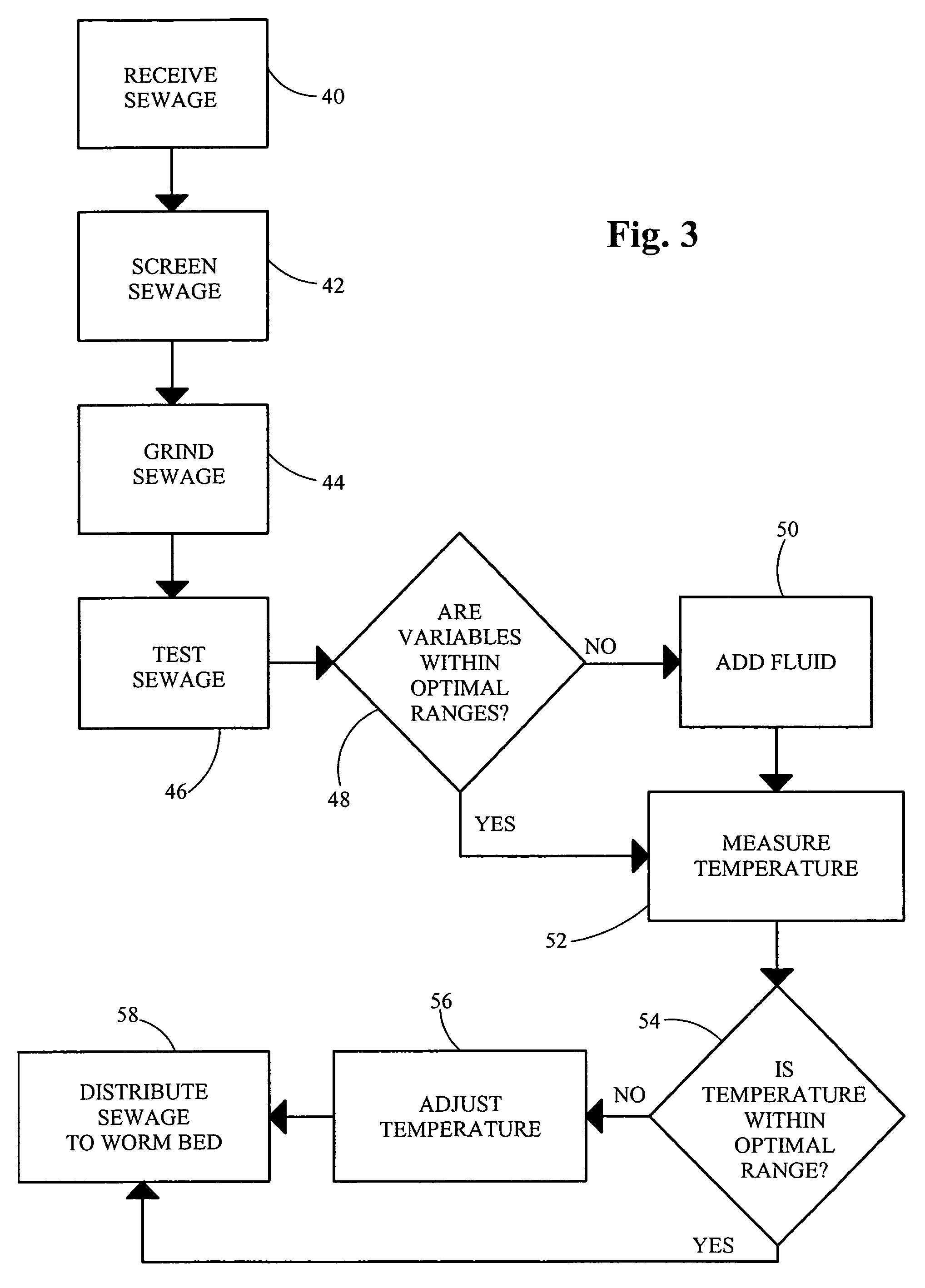Method and apparatus for biosustaining waste activated vermicular environment
a waste activated vermicular environment and biosustainability technology, applied in the field of waste treatment systems, can solve the problems of serious and adverse effects or elimination of waste biosustainability and efficacy as sewage treatment process
- Summary
- Abstract
- Description
- Claims
- Application Information
AI Technical Summary
Problems solved by technology
Method used
Image
Examples
Embodiment Construction
[0014] Referring to FIGS. 1-2, a system 10 includes discrete components which are interrelated within specified tolerances resulting in an efficient, effective, and economically feasible method of treating and disposing of a substantial volume of human and animal sewage / waste. The entire system operates indoors, under one roof, thus presenting an exterior appearance that can be aesthetically pleasing, unassuming, and architecturally appropriate in a wide range of settings. The process involves the application of sewage / waste in liquid state (“effluent”) to specifically prepared earthworm beds wherein virtually all environmentally harmful or undesirable solids are digested by the worms, resulting in the production of a high nutrient vermicompost suitable for direct application in a number of settings such as horticulture, landscaping, golf courses, municipal parks, etc. In one embodiment, system 10 includes an effluent input line 12 which passes effluent into a first tank 14 for init...
PUM
| Property | Measurement | Unit |
|---|---|---|
| latitude | aaaaa | aaaaa |
| depth | aaaaa | aaaaa |
| bed temperature | aaaaa | aaaaa |
Abstract
Description
Claims
Application Information
 Login to view more
Login to view more - R&D Engineer
- R&D Manager
- IP Professional
- Industry Leading Data Capabilities
- Powerful AI technology
- Patent DNA Extraction
Browse by: Latest US Patents, China's latest patents, Technical Efficacy Thesaurus, Application Domain, Technology Topic.
© 2024 PatSnap. All rights reserved.Legal|Privacy policy|Modern Slavery Act Transparency Statement|Sitemap



